Brand-Building vs World-Building: How Expanding More Pays Off
Updated on
Published on
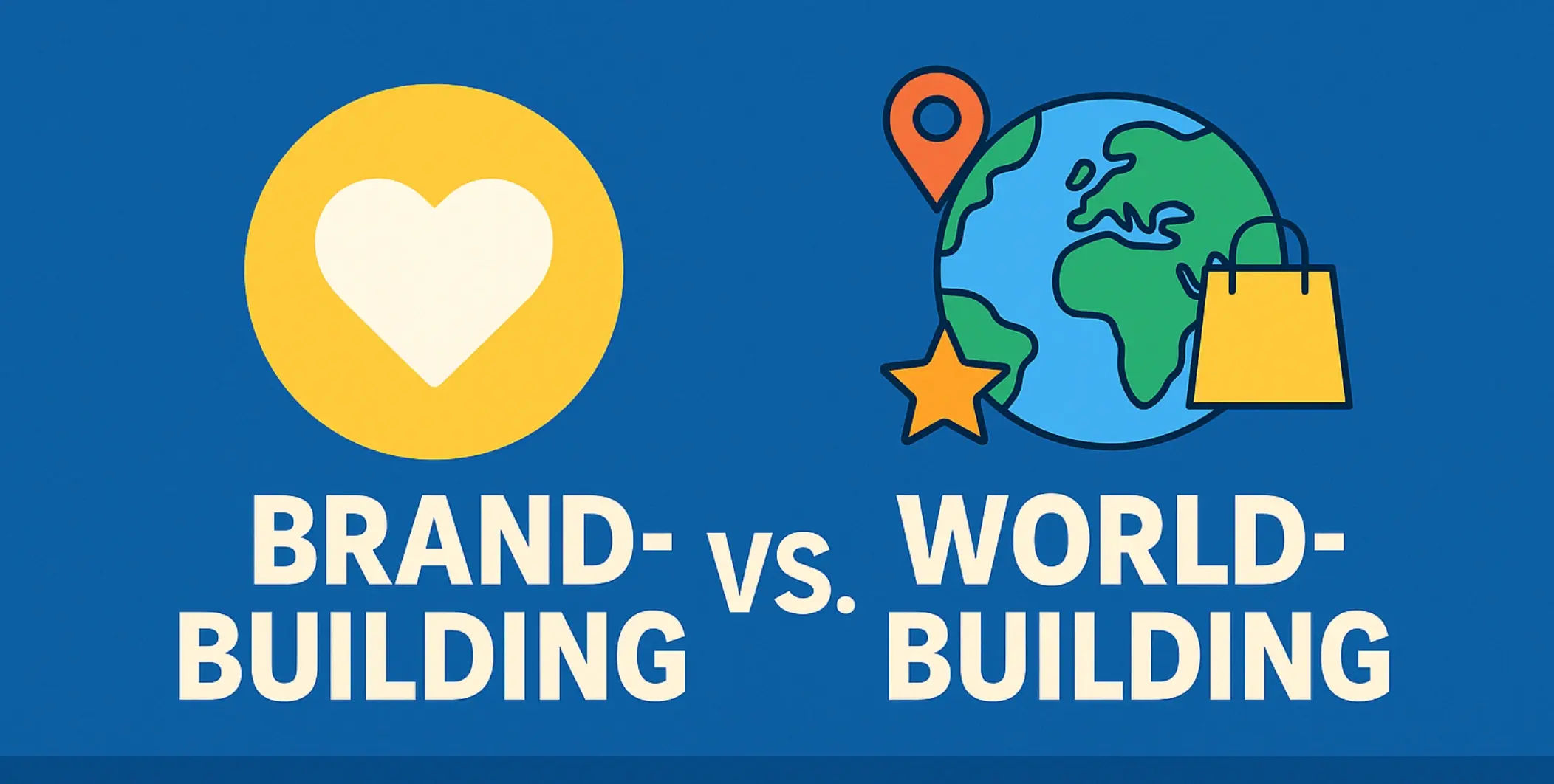
Brand-building vs. world-building is a growth sequence. brand-building makes people recognise you in a heartbeat; world-building gives you more places, formats, and moments to meet them, so total reach expands. When the same anchor shows up across more scenes, platforms, and creators, you hit fresh audience pockets without diluting identity: awareness grows wider, frequency grows cheaper, and conversion scales because every touchpoint feels familiar (IPA: Binet & Field).
- Anchor for fast recognition; expand the world to unlock new reach and frequency.
- Go wide to plant memory, then go deep so more impressions convert with less effort.
At a glance
- Anchor first for instant recognition; expand the world to multiply formats, audiences, and touchpoints.
- World building unlocks cheaper frequency and new audience pockets while keeping identity consistent.
- Sequence wide, then deep: plant salience with broad reach, sustain with episodic chapters.
- Map entry moments (contexts before purchase) to open fresh reach and raise conversion odds.
- Keep brand and performance in parallel; reuse the same codes so every click also builds memory.
- Treat post-click UX as canon: same hook, fast path, wallet-ready flows to turn reach into results.
- Measure two stacks: salience (recognition fast) and depth/scale (repeat engagement, cost-per-effective-reach).
Governance matters: short world guide, greenlight rule (“no anchor, no media”), pre-flight drift checks.
The core idea: anchor, then universe
Pick one anchor: tagline, sonic cue, mascot, or signature pack/shape—and make it non-negotiable. Under low attention, people don’t parse details; they latch onto distinctive assets that “code” your brand instantly. Once you’ve validated which cues are already famous, build a simple universe around them- three go-to locations, two recurring characters, one ritual- so you can publish ten times more executions without inventing a new identity each time. That’s how world-building turns creative variety into scalable reach without fragmenting the brand (Ehrenberg-Bass: Distinctive assets).
- Guardrail: change chapters, not codes- variety for reach, consistency for attribution.
- Practice: show a core asset in the first frame; close with a consistent end card.
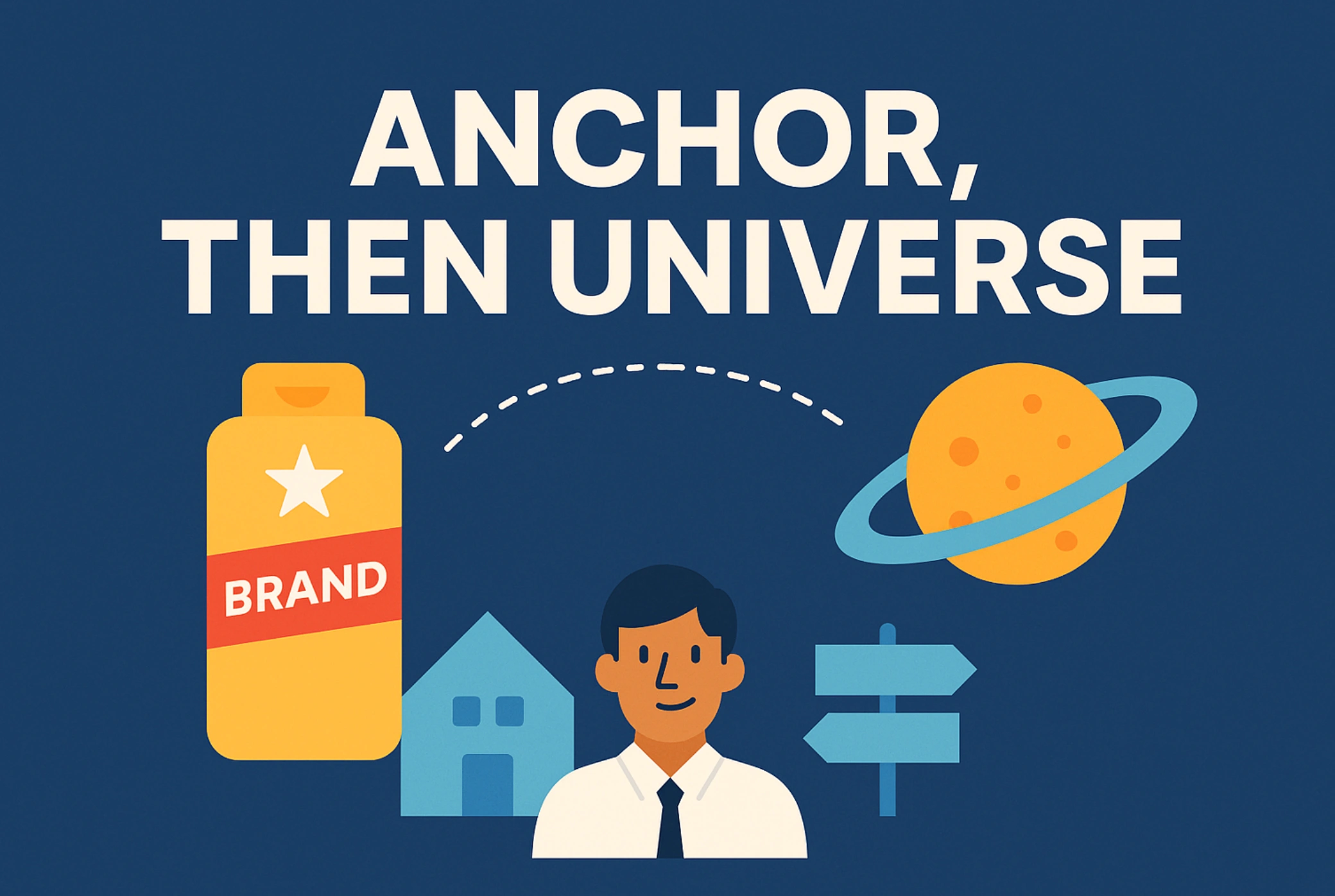
Brand-building for instant recognition
If viewers can’t tell it’s you in two seconds, extra impressions don’t help. Bake recognisable assets into the opening beat, give the brand a visible role in the action, and repeat a locked end frame for “memory closure.” Creative quality is a major sales lever, strong openings and mnemonic cues lift both paid efficiency and organic carryover, so each new impression works harder at scale (Nielsen: Creative impact).
- Rule of two: two brand cues in the first five seconds; repeat one at the end.
- Toolkit: hero line, sonic sting, framing rules, colour system, pack timing.
-1.webp)
World-building for depth that multiplies reach
World-building is how you stay interesting while getting broader. Define a “canon” (places, characters, props, tone) and release chapters that map to real use situations. Because scenes are modular and on-code, you can ship more formats, more often, across more channels and creators. More executions that still look and feel like you means more total reach and easier conversion, new audiences meet a world that’s already familiar (Ehrenberg-Bass: Category Entry Points).
- World bible essentials: three locales, two characters, one recurring ritual, plus do/don’t examples.
- Chapter plan: quarterly arcs tied to seasonality, launches, or cultural moments.
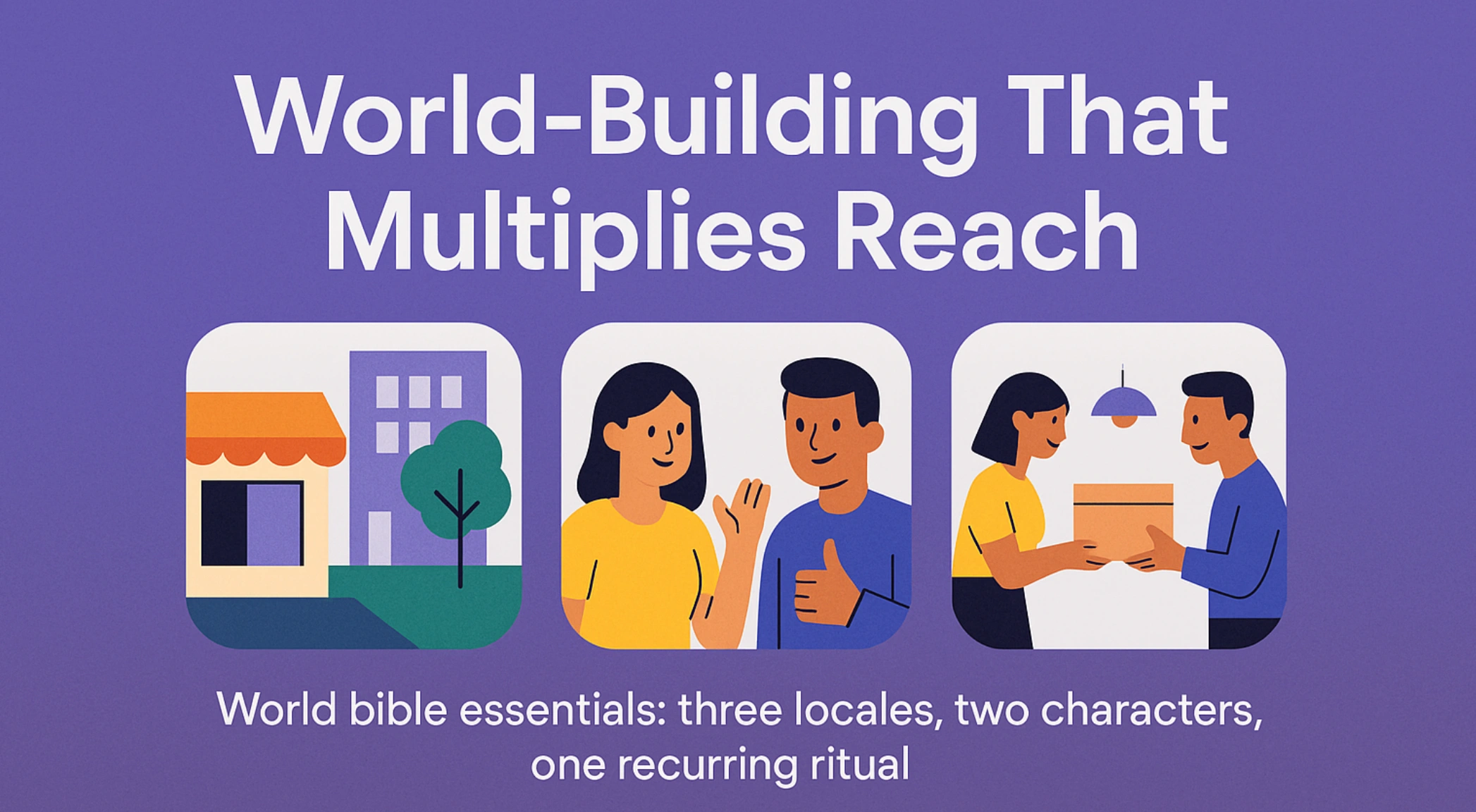
Wide, then deep: sequencing that scales reach and conversion
Plant the anchor with broad, emotion-led reach so people learn your code, then feed depth with short, episodic pieces that keep frequency high without creative fatigue. Long-term brand-building grows tomorrow’s demand; short-term activation harvests today’s- but reach comes first so later impressions convert more often at lower cost (IPA: Binet & Field).
- Flighting mix: hero film for fame; short cuts for frequency; OOH/audio to reinforce cues.
- Edit check: no cue, no media- every cut must contain at least one distinctive asset.
.webp)
Map entry moments to unlock new audience pockets
People decide in moments, not demographics. List the situations that precede choice: post-workout, Friday treat, team quick win and build scenes that literally name or depict those moments. Each new moment you claim opens a fresh vein of reach, and because the visuals stay on-code, those impressions attribute correctly and convert faster (Ehrenberg-Bass: Category Entry Points).
- Playbook: pick 5–8 entry moments for the next 12 months; ship one clean execution per moment.
- Language tip: say the moment in copy or show it plainly on screen to “teach” recall.
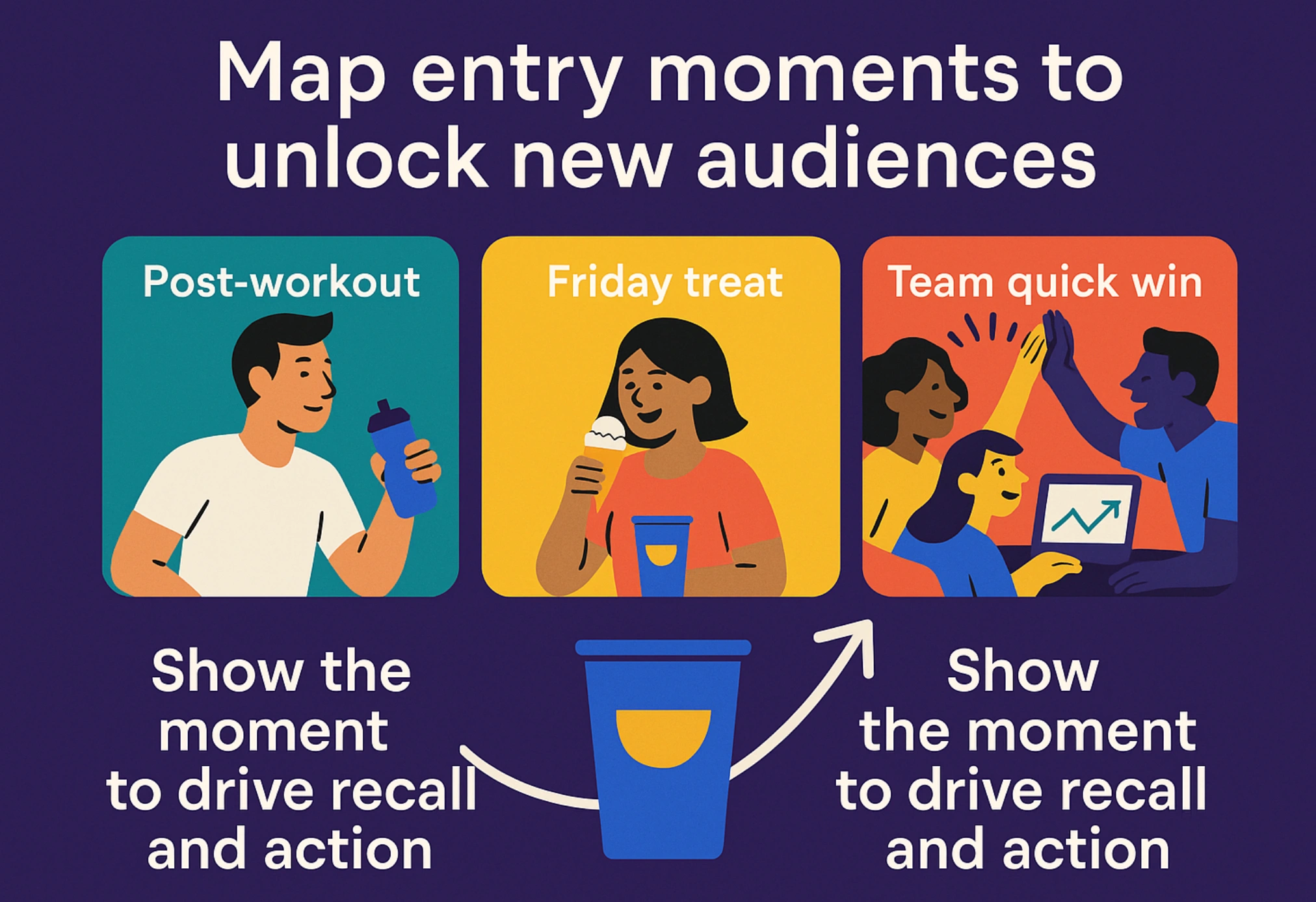
Balance brand and performance so scale sticks
Run brand and performance together. Keep the same anchor and world cues inside your direct-response units so every cheap click also builds memory. Set separate budgets and KPIs, salience/penetration for brand, sales/CPA for activation and judge the combined effect. This is how world-building turns net-new reach into reliable, repeatable conversion at scale (IPA: Effectiveness).
- Starting point to test: 60/40 brand/performance, then tune to your category.
- DR rule: same device, same sonic, same pack, new offer, faster path.
Creators as reach multipliers, not brand drift
Creators can unlock communities your media plan can’t. Give them rails: editable end cards, motion presets, a “scene grammar” so their content stays in-world. Hold submissions to a simple test: can a viewer recognise the brand in three seconds? Done right, creator output multiplies reach while preserving fluency, raising both watch-through and conversion odds (Nielsen: Creative impact).
- Provide: asset files, transitions, caption styles, and a short do/don’t reel.
- Greenlight rule: no clear cue in the opening beats, no publish.
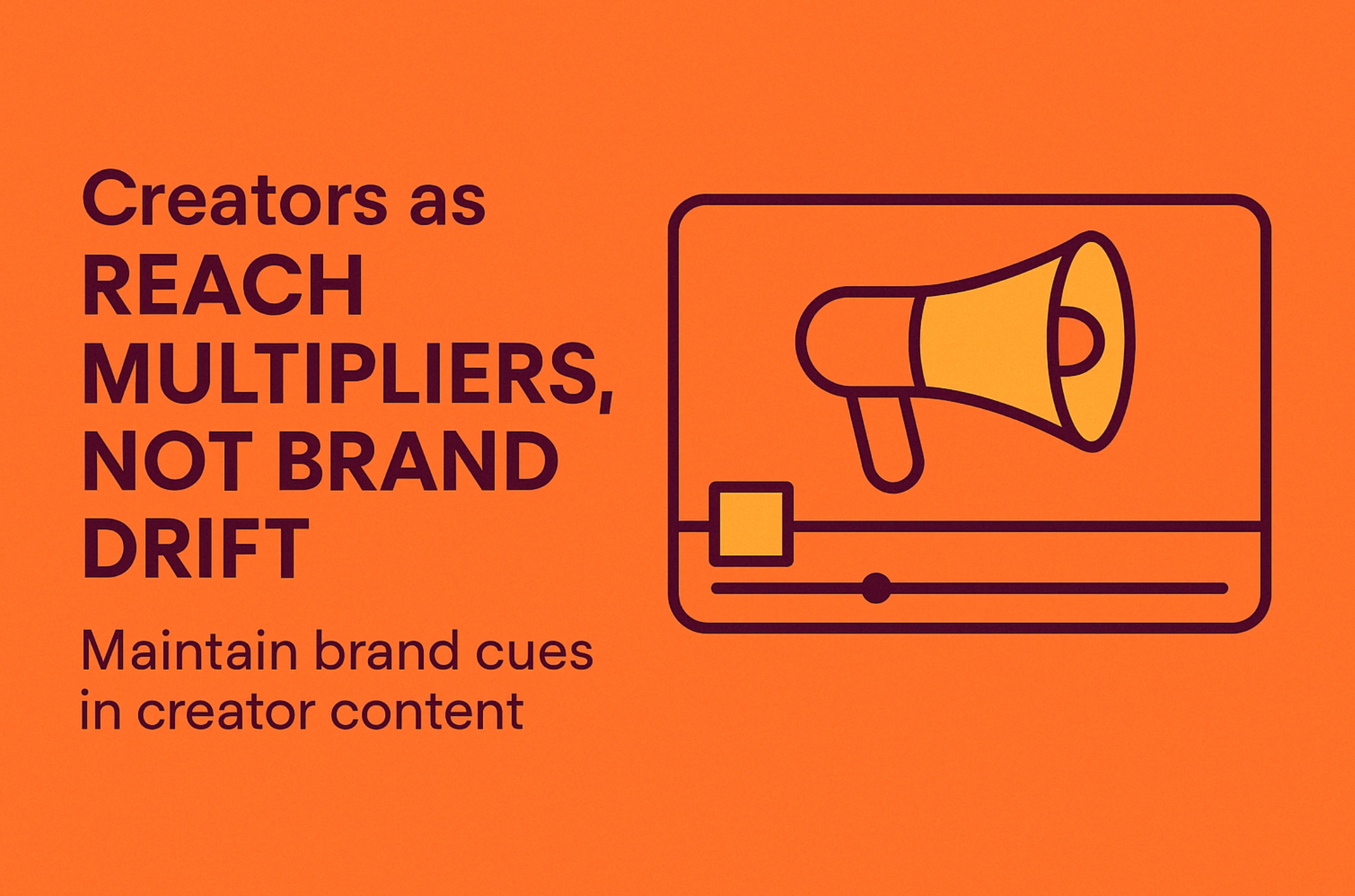
Product as plot to scale formats without losing identity
Make products act in-world. Assign roles (solver, treat, pro option) and show them changing outcomes. Using a simple beat—problem → brand action → better result—lets you spin countless platform-specific edits while staying recognisable. The more edits you can safely ship, the more reach you generate, and the more of that reach converts because attribution is instant (Ehrenberg-Bass: Distinctive assets).
- Beat list to reuse: same action across locales; same cue across formats.
- Always-on: keep one evergreen scene per entry moment you can rotate year-round.
UX as canon: keep momentum so reach turns into results
The story shouldn’t stop at the click. Mirror the ad’s headline and hero on the landing page, give one obvious next step, and make mobile paths wallet-ready. In micro-moments, speed and clarity are part of the creative idea; smooth post-click flows raise conversion on the extra reach your world created (Think with Google: Micro-moments).
- First-viewport rule: same hook, same hero, one clear action, no generic homepages.
- Friction check: measure page speed and form steps like they’re media metrics.
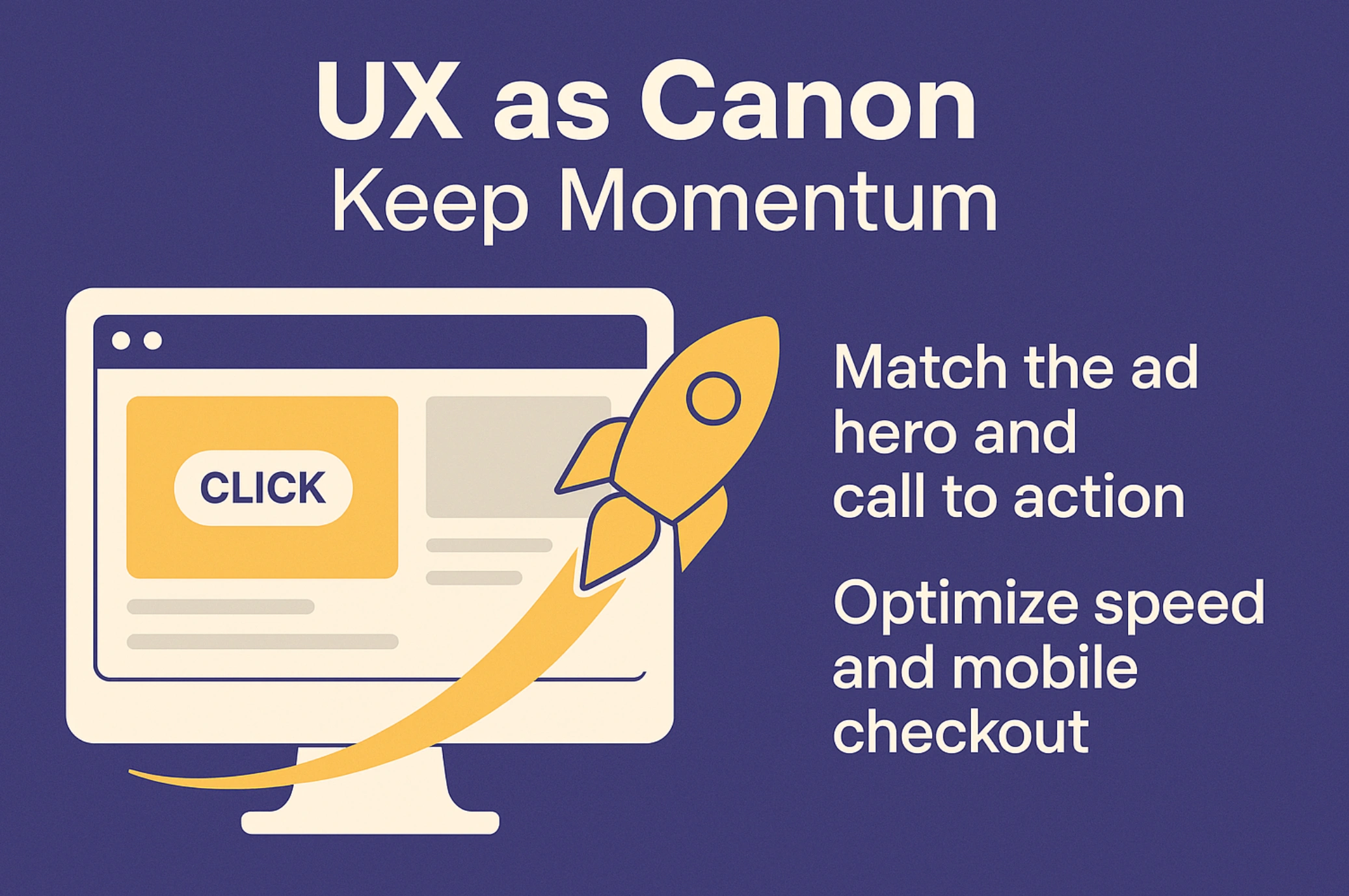
Measurement: prove that expansion equals efficient scale
Track two stacks. Salience: asset recognition, two-second attribution, prompted/unprompted recall. Depth and scale: repeat engagement, time in-world, creator/UGC lifts, and cost-per-incremental-reach. If salience slips, tighten assets; if depth lags, add chapters and not new codes (Ehrenberg-Bass: Distinctive assets).
- Quarterly “asset fluency” test; fix or bin low-coding edits early.
- Episode scorecard: does it expand the world and lower cost-per-effective-reach?
Governance: systemise the world so it keeps expanding
Write a concise world guide: anchor, assets, characters, locales, tone, motion, type, dos/don’ts- and attach it to every brief. Keep a small “opportunity pot” to jump on cultural moments without breaking the code. Systemising the world is what lets you publish more, across more channels, to reach more audiences, while conversion improves because everything still feels like you (IPA: Binet & Field).
- Greenlight mantra: no anchor, no media; consistency is how scale stays efficient.
- Drift watch: standardise pre-flight checks on colour, sonic, and framing.
.webp)
FAQ
What’s the difference between brand building and world building?
Brand building creates fast recognition with distinctive assets. World building adds characters, places, and rituals around those assets so you can publish more on-code stories across channels; expanding reach without diluting identity.
How does world building increase reach?
Modular, on-code scenes let you ship more executions for more platforms and creators. More publishable formats equals more total impressions and cheaper frequency, while the fixed anchor keeps attribution and recall strong.
What should I measure to prove it’s working?
Track salience (two-second attribution, asset recognition, recall) and depth/scale (repeat engagement, creator/UGC lifts, cost-per-incremental-reach). If salience slips, tighten assets; if depth lags, add chapters, not new codes.
How do I map entry moments that actually pay off?
List the real contexts before choice (post-workout, Friday treat, team quick win). Script one clean, on-code scene per moment and name or depict the moment explicitly so recall triggers on cue.
Make the world, not just a community
If you’re choosing between brand-building vs. world-building, don’t sequence them. Build the anchor for instant recognition, then expand the universe for variety, frequency, and new audience pockets. Do that, and you don’t just reach more with world-building; you convert more of that reach, more often, with less effort.







